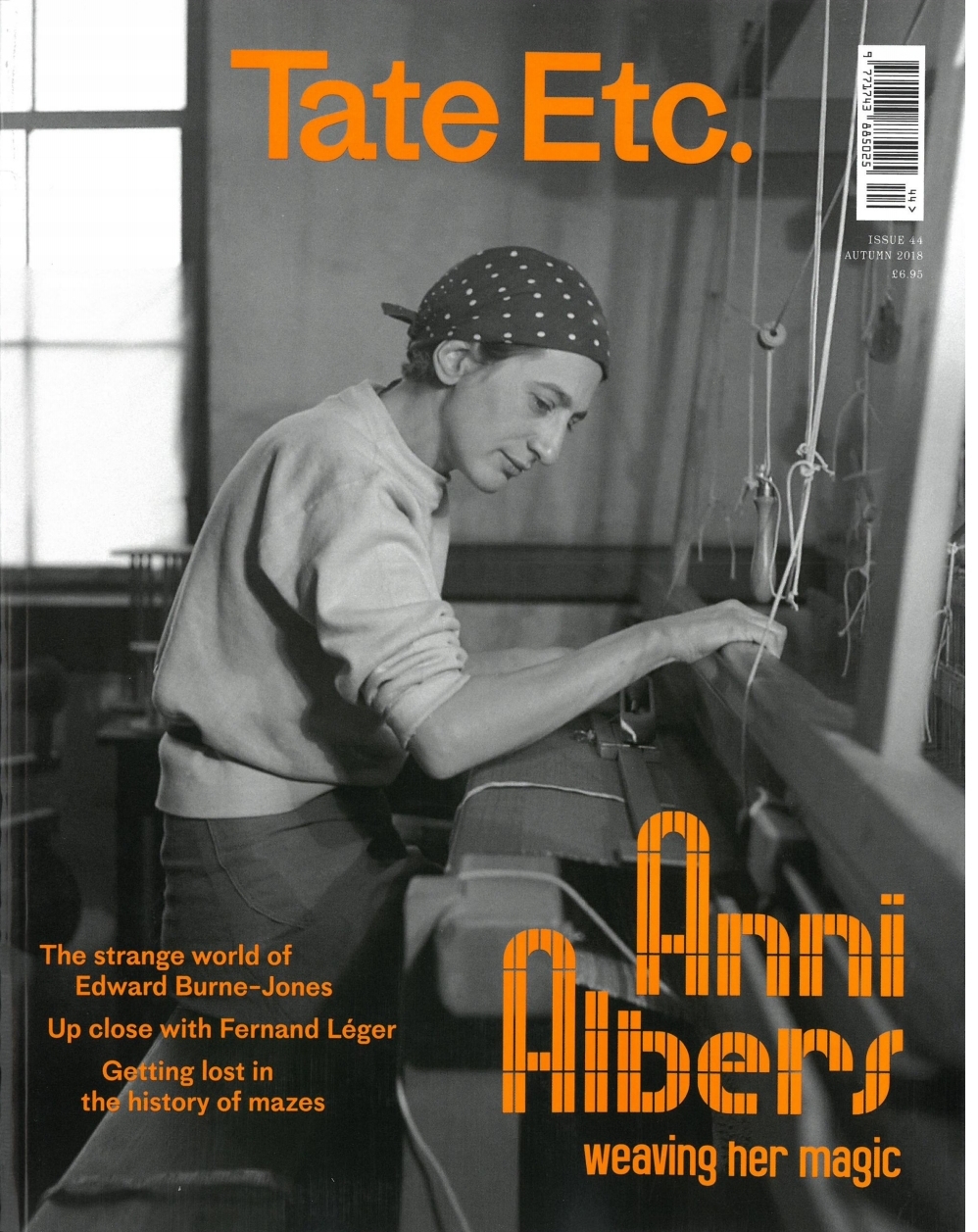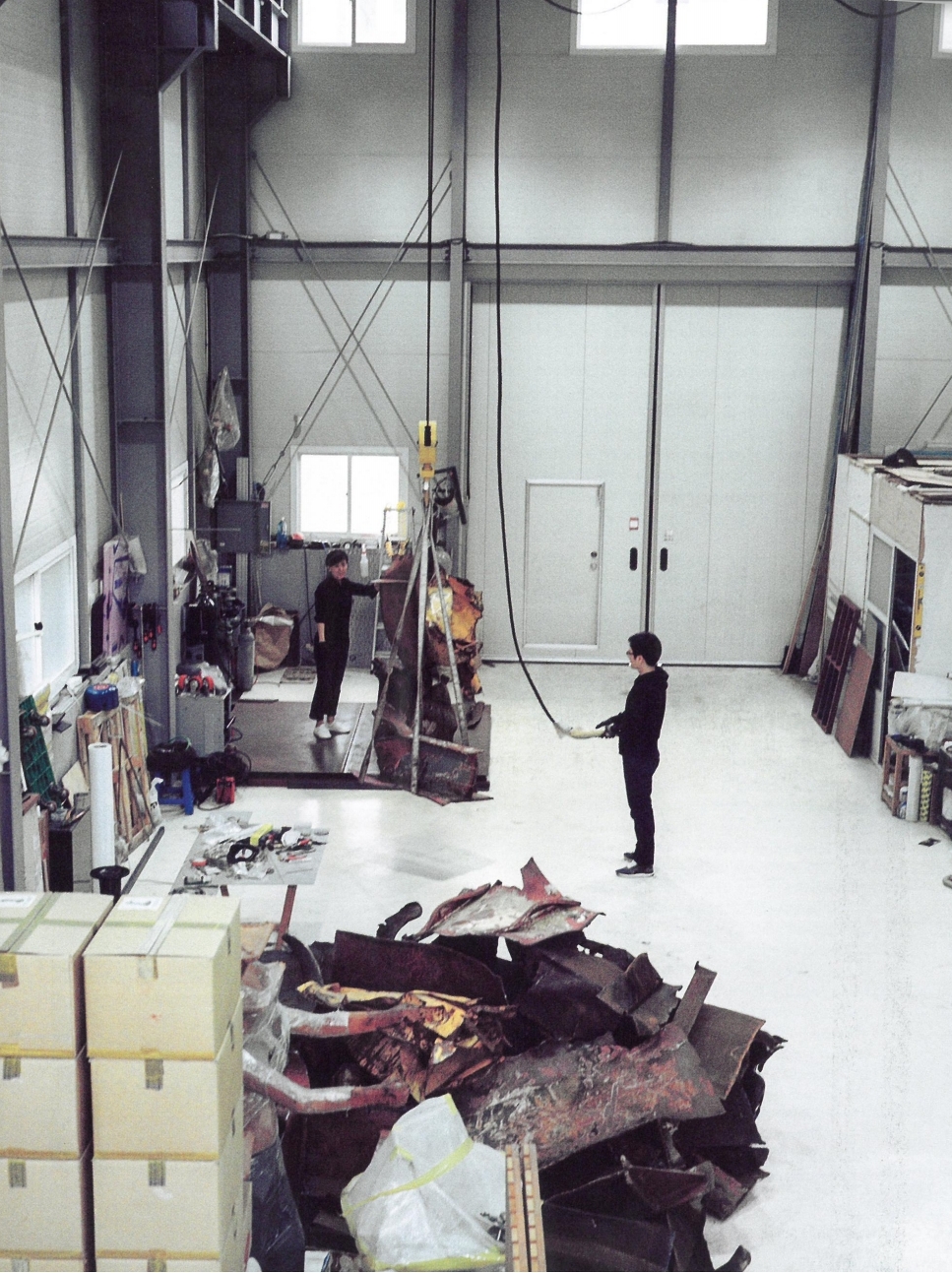2018.11.23 - 2019.03.17



Since 2010 the South Korean artists Moon Kyungwon and Jeon Joonho (both b1969) have collaborated on News from Nowhere. Their ambitious project consists of Films, exhibitions, workshops and lectures, and aims to explore the social role and function of art.
Inspired by William Norris’s socialist utopian novel of the same name, News from Nowhere envisions a post – apocalyptic world in which virtually all of humanity has been wiped out, and imagines how art might exist when everything we know has all but disappeared.
At each stage the artists have collaborated with renowned experts from the fields of product and fashion design, architecture, urban planning and medical research to create technologically advanced props and costumes for their films and elaborate exhibition designs.
Tate Etc. caught up with the artists Jeon’s Studio in Busan to hear about the next stage of the project coming to Tate Liverpool this autumn.
Tate Etc. How did your project News from Nowhere begin?
MOOM KYUNGWON AND JEON JOONHO The title of the project comes from novel written by the eminent English designer, writer and social activist William Morris. In his 1890 book News from Nowhere the narrator finds himself in 21st-century London while in a dream. By depicting a future utopian society in which everyone enjoys happiness and equality, Norris indirectly criticizes the hierarchical system and conflicting morals of his contemporary 19th-century England.
Like Morris, we present our vision of the world 100 years from now as a way to reflect on today’s society. However, while this line of thought was drawn from Morris, we do not envision an attractive future nor a dystopia. Nor do we intend to suggest ideal artistic forms and answers for the future. Instead, by reflecting on artistic discourses, as well as the present era more broadly, we seek to ask ourselves questions that allow us to examine contemporary society as a whole – through an understanding not only of art, but also ourselves.
Our conversations began with concerns about contemporary art, including the meaning of art, the expend ability of exhibitions, and the absence of critique. We were both about a decade into our careers as artists and beginning to become fed up with contemporary art, particularly its inextricable connection to capitalist markets. We wanted to create works that were distanced from elitism-to instead make art as a means to communicate with the public. It also struck us that we should create art that is not only practical but introspective too, in the sense that it would provide us with the opportunity to reflect upon ourselves as artists and individuals.
Initially, we had a simple plan: to write up a scenario based on our conversations together and create a two-channel video. However, as our thoughts gradually took shape, the scope of our concerns increased. We wanted to go beyond the film concept and sought collaborators and advisers working in varied disciplines, including the humanities, sciences, religion and the arts. Thus, News from Nowhere expanded into an open platform for discussing society at large.
The film El Fin del Mundo (The End of the World) 2012, which is essentially the core of this project, adopts a futuristic setting of the apocalypse and its aftermath: it features a man striving to demonstrate his existence through art, and a woman exploring her forgotten identity while adapting to the sterile conditions of the new world. This post-apocalyptic world inspires questions: What values will sustain our existence? Will sunsets still be beautiful? Our minds enter a new realm of the unknown, going beyond the values of the present. This futuristic world is not a complete denial of the present, but rather questions the norm through challenge and experimentation. This is grounded in our belief that the role of art is not to present a right answer but to offer questions in trying to find answers.
ETC. You often work in film, employing cinema-quality production tecñiques. Why do you choose to work in this specific medium?
MK & JJ Who could resist working in this fascinating format? Film is a valuable collaborative platform and its production process has parallels to the ideas present in our News from Nowhere project. When an idea from a work is finalized (or even before), the entire filming process is then carried out through collaboration. During meetings with actors and production staff, ideas are exchanged, debated and meshed together. We create each and every frame with great detail, bringing together our thoughts like warp and weft – combining multiple elements to create a single fabric. Of course, this way of working is strenuous in terms of time and effort, but the result is very rewarding.
Science fiction an allegory of the present. That is, it is a mirror of the contemporary, as well as a vision of the possible future. Seeing the meditation on humanity in Ridley Scott’s Blade Runner(1982), the contemplation of the origin and destiny of humans in Stanley Kubrick’s 2001: A Space Odyssey(1968), and the series of distorted human desires and transcendental love for mankind in Hayao Miyazaki’s Future Boy Conan(1978) and Nausicaä of the Valley of the Wind(1984), we realized that science fiction is not just reckless imagination, but a portrait of our present selves.
ETC. What is the new work you are making for Tate Liverpool about?
MK & JJ When our exhibition was confirmed at Tate Liverpool, we decided that our new work should be a continuation of our first video work, El Fin del Mundo, and also have a connection to Liverpool. In El Fin del Mundo, following the apocalypse, the male protagonist fills a trolley with abandoned objects from the outside world and reassembles them in his studio. Our new work filmed in Liverpool will continue from this scene: the man has crossed space and time to finally arrive in Liverpool, yet, no one can see him. He exists, but others are not aware of him, almost as if he is invisible. In Liverpool, he tries to create another piece of work by collecting evidence of the apocalypse, but the world around him has not yet fallen or been destroyed. Has he foreseen the impending end of the world? We can never know. What we do know, however, is that the future is always contingent on the present and therefore uncertain and unstable.
He leaves the pub unnoticed and takes his trolley to downtown Liverpool where he continues, as always, gathering abandoned objects. What people see is a trolley wheeling around on its own, as if it were in a scene from a science fiction film. Leaving the crowded downtown area, the trolley rolls off to an area dotted with cathedrals that survived the bombings of the Second World War, and ruined industrial quarters that were once the world’s central trade port. Watching this scene is like witnessing the gradual end of human civilization.
By tracing one character’s endeavor to discover the value and role of art in an incredibly disordered time and space, we are asked to contemplate ourselves and consider whether art is indeed valuable.
ETC. Could you say more about how the project will have connection to Liverpool and its history?
MK & JJ The video installations at Tate Liverpool will be presented in an environment made from metal fragments that appear to be scraps from shipwrecks. In Liverpool, a maritime city that has played a crucial role in Britain’s economy since the 18th century, these scraps are presented as epitaphs, or historical traces, of a fragmented world, a world that is segmented and severed by the conditions of today’s tecñologicallyadvanced civilization. Besides this, we are planning a public participatory project involving a gigantic board installed in the streets of Liverpool on which people will be able to draw, write and post advertisements. This illustrated board will then be displayed on the wall of the gallery to allow form new interpretations.
ETC. Do you see connections with the Fernand Légerexhibition being shown at Tate Liverpool at the same time?
MK & JJ Our News from Nowhere project began with a skepticism towards art. Nevertheless, while carrying out his project, we once again came to believe in art’s role as a means to liberate fixed perspectives and prejudices. This tallies with Léger efforts to explain the world through a multitude of perspectives–painting, sculpture and film-and his longing for an art that discovers beauty in the lives of what he sees as normal people.
In the post-war machine age, Léger’s particular worldview affirmed that mankind is always at the centre of the utopian idea that tecñology will transform human life for the better. He showed a continued interest in and affection for mankind, notable at a time when many of his contemporaries became involved in abstraction. He believed that people are the core of tecñological civilization and that addressing their lives was the most important part of his work. Ime has passed since Léger, and we are now living in the high- tecñology society that he dreamt of . Yet we often feel that society more closely resembles a dystopia rather than the utopia he imagined. Or News from Nowhere project seeks to explore what art can do in this era of turbulence.